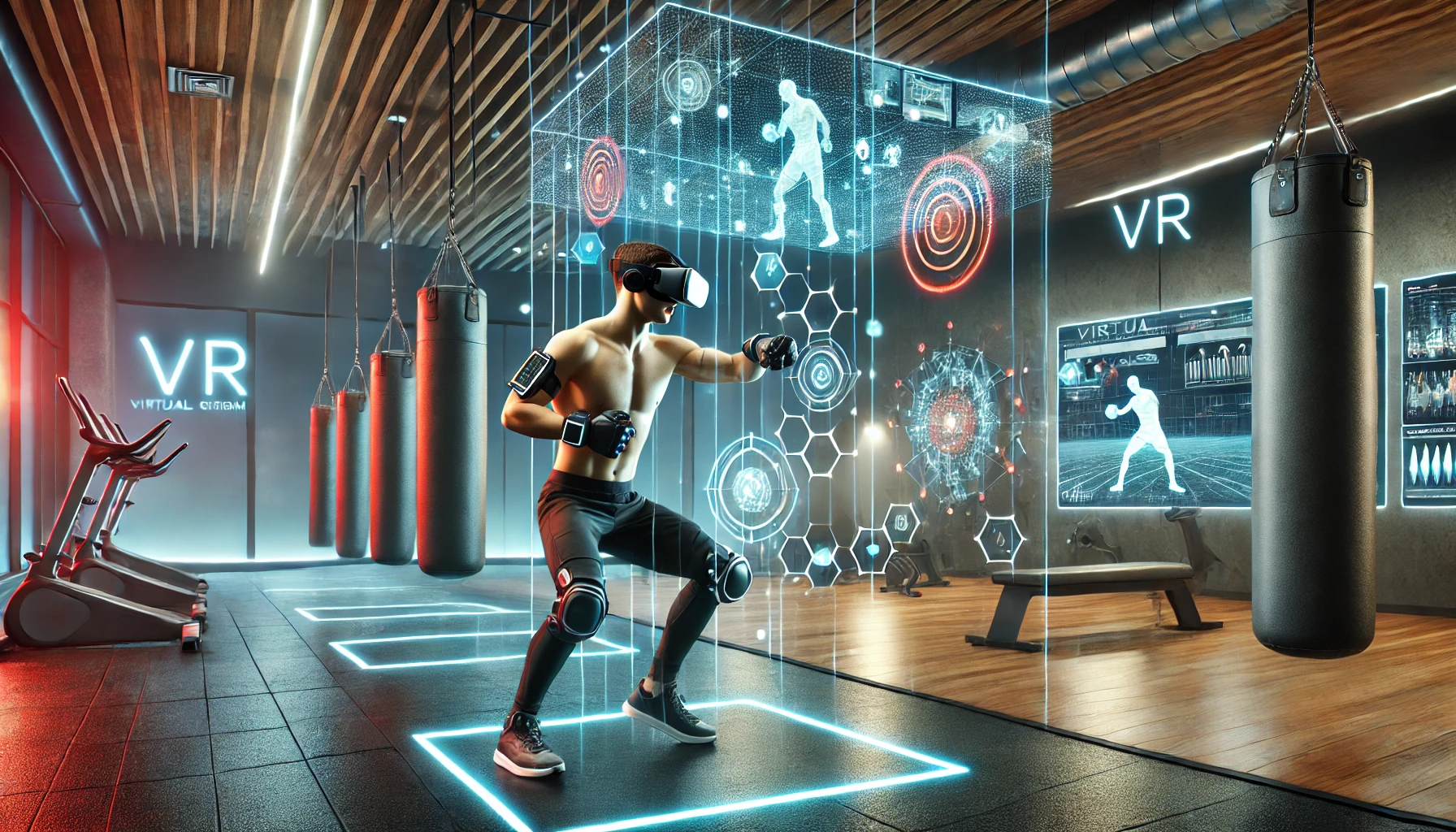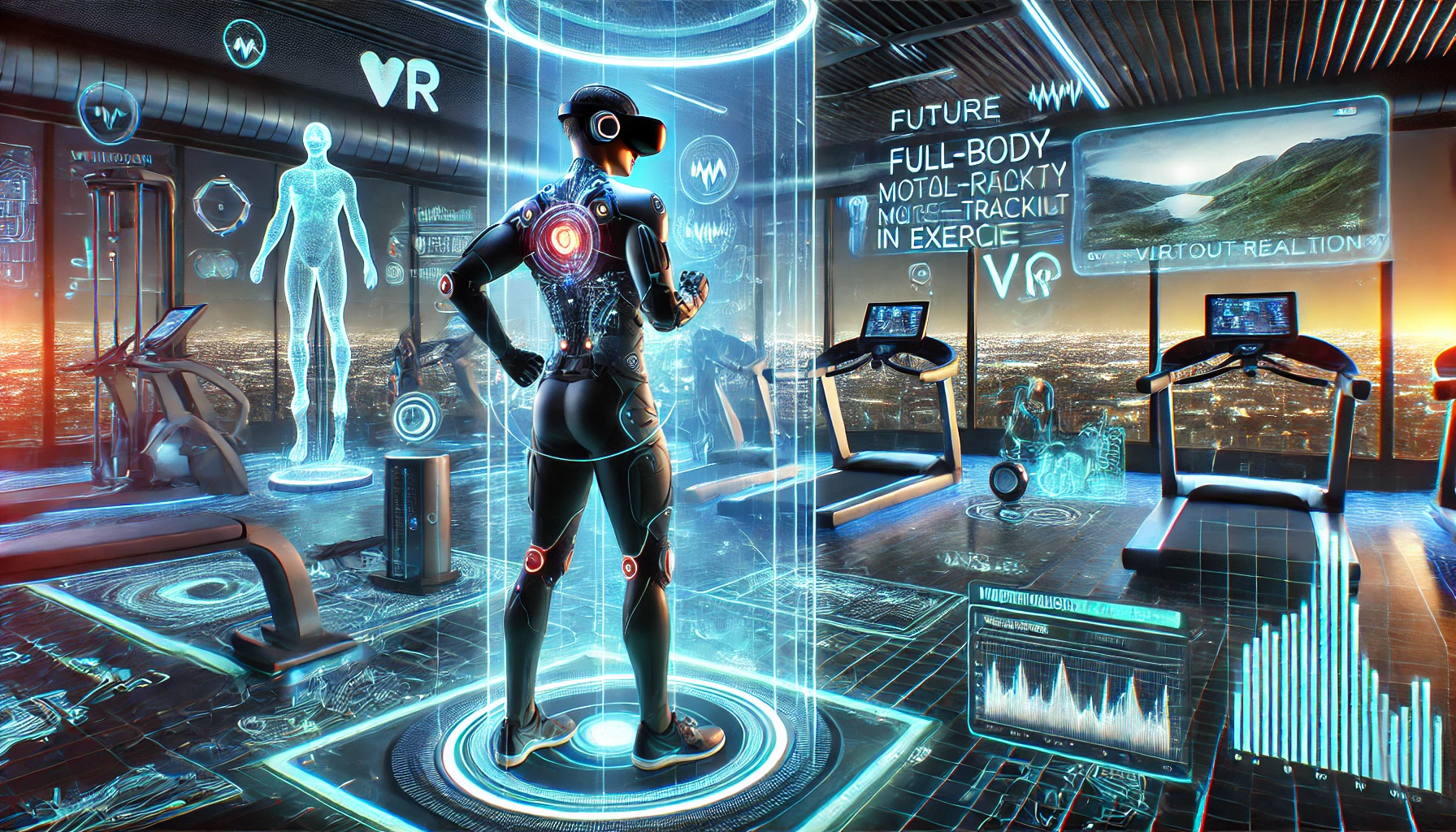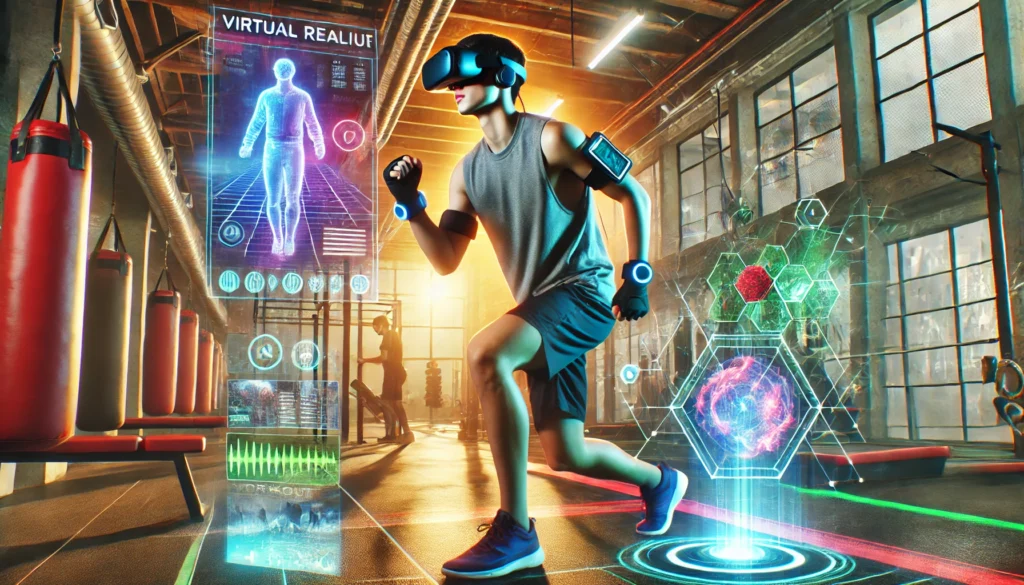Introduction
What is Virtual Reality (VR)?
Virtual Reality for exercise is an immersive technology that transports users into computer-generated environments, using specialized equipment like VR headsets and controllers. These environments can simulate everything from faraway places to fantastical worlds. VR works by combining 3D visuals, sound, and motion tracking, offering a realistic and interactive experience.
The Rise of Virtual Reality in Fitness
Initially popularized in gaming, VR has found a new purpose in the fitness world. The potential for immersive, engaging experiences has drawn the attention of fitness enthusiasts, helping them stay active in fun, interactive ways. VR allows people to cycle through virtual landscapes, box with avatars, or even perform yoga in serene virtual settings, making exercise enjoyable and exciting.
Purpose of the Article
This article explores how VR is revolutionizing exercise, making it more engaging, accessible, and beneficial for both physical and mental health. Whether you’re a beginner or a seasoned fitness enthusiast, VR offers a fresh way to incorporate exercise into your life.
How Virtual Reality Enhances Exercise
Immersive Workouts
One of the biggest advantages of virtual reality for exercise is the immersive nature of VR workouts. By entering a virtual world, users are no longer confined to the monotony of a traditional gym. Imagine cycling through scenic mountains or dancing in a virtual nightclub. These immersive environments help boost motivation, making it easier to stay active and enjoy the workout process.
Engagement and Motivation
The virtual reality for exercise experience is highly engaging. With features like gamification—where users can unlock achievements, earn rewards, and track their progress—VR makes exercise feel like a game. This makes it easier to stick with a routine, especially for those who find traditional workouts boring or repetitive.
Variety of Workouts
VR offers a diverse range of workouts. Whether you enjoy boxing, yoga, aerobics, martial arts, or even dancing, there’s something for everyone. This variety helps keep workouts interesting and tailored to individual preferences and fitness levels, making it an ideal choice for people looking to break free from traditional exercise routines.

Benefits of Using Virtual Reality for Exercise
Physical Health Benefits
Using VR for exercise can lead to significant improvements in cardiovascular health, muscle strength, and flexibility. The immersive nature of the workout ensures you’re fully engaged, which can increase the duration and intensity of your sessions, promoting better health outcomes.
Mental Health Benefits
Beyond physical health, virtual reality for exercise can also be beneficial for your mental well-being. VR workouts can help reduce stress, improve mood, and alleviate symptoms of anxiety and depression by providing a fun and engaging way to stay active.
Convenience and Accessibility
For those who find it difficult to make it to the gym, VR fitness offers a home-based solution. With minimal space and no expensive equipment required, VR enables you to enjoy a full-body workout from the comfort of your home. This makes it an excellent option for people with busy schedules or those who prefer working out privately.
Personalized Training
VR fitness apps can be customized to fit your individual goals and progress. As you advance, the system adapts, increasing the difficulty and introducing new challenges. This personalization ensures that your fitness journey remains exciting and aligned with your personal goals.
Popular VR Fitness Apps and Devices
VR Fitness Apps
Several popular apps make the virtual reality for exercise experience even more engaging. Apps like Supernatural, Beat Saber, and BoxVR offer various workout styles—from cardio to strength training—set within interactive, immersive worlds. These apps not only make exercise enjoyable but also track your progress, helping you stay motivated.
VR Headsets for Fitness
To get the best experience from virtual reality for exercise, a quality VR headset is essential. Options like the Oculus Quest, HTC Vive, and PlayStation VR offer comfortable, durable designs with accurate motion tracking, ensuring that your workouts are smooth and effective.
Equipment Needed for VR Workouts
Besides the headset, some VR fitness apps may require additional equipment, such as controllers, fitness trackers, or even smart shoes for real-time feedback. Setting up a dedicated workout space at home is also a good idea, ensuring a safe and effective exercise environment.
Overcoming Challenges with VR Fitness
Space Requirements
While VR fitness is accessible at home, ensuring you have enough space is crucial. Make sure your workout area is free of obstacles to reduce the risk of injury. A well-lit, spacious room is ideal for performing a range of VR exercises safely.
Motion Sickness
Some users experience motion sickness during VR workouts. This can be mitigated by taking regular breaks, adjusting the settings (e.g., reducing motion blur), or starting with less intense VR sessions. Over time, your body may become accustomed to the VR environment.
Cost of VR Equipment
Investing in VR equipment may seem costly upfront. However, when compared to the long-term cost of gym memberships or fitness classes, it can be a cost-effective solution. Additionally, the convenience and accessibility of home-based workouts make VR a worthwhile investment for many.
Who Can Benefit from Virtual Reality for Exercise?
Beginners and People New to Fitness
For those just starting their fitness journey, virtual reality for exercise offers a fun, non-intimidating introduction to working out. The gamified elements and variety of exercises help keep beginners engaged, reducing the fear of judgment often felt in traditional gym settings.
People with Limited Mobility
VR fitness can also be an excellent choice for individuals with joint issues or limited mobility. Low-impact exercises such as virtual cycling or seated yoga can help improve flexibility and strength without straining the body.
Fitness Enthusiasts Looking for Variety
For seasoned athletes or fitness enthusiasts, VR offers new challenges and variety. If you’re tired of the same old workout routines, VR can introduce fresh, exciting ways to stay in shape.
People with Busy Lifestyles
VR fitness is a great option for people with hectic schedules. The ability to work out at home, at your convenience, means you can fit in a full-body workout without the need for a gym or additional travel time.

Future of Virtual Reality in Exercise
Technological Advancements
As VR technology continues to improve, the potential for more immersive, realistic workouts grows. Features like better graphics, haptic feedback, and AI integration will make VR workouts even more engaging and effective in the future.
Integration with Wearables and Health Tracking
In the future, virtual reality for exercise may integrate seamlessly with wearables and health trackers. This could allow users to monitor their heart rate, calories burned, and other health metrics, further personalizing the workout experience.
Expanding Access to VR Fitness
As VR technology becomes more affordable, it’s likely that VR fitness will become even more accessible. With more budget-friendly options and greater availability, VR could become a mainstream tool for staying fit.
Conclusion
Summary of Key Points
Virtual reality for exercise is transforming the way we approach fitness. Its immersive nature, coupled with engaging and varied workouts, makes it an exciting way to stay active and healthy. From physical health benefits to mental wellness, VR offers an all-in-one solution to fitness challenges.
Encouragement to Try VR Workouts
Ready to try something new? Dive into the world of virtual reality for exercise today and explore the variety of workouts available through VR fitness apps and devices.
Future Outlook
As VR continues to evolve, its role in the fitness industry will only grow. Whether you’re a beginner or a pro, VR is set to become a staple in fitness routines worldwide.
FAQs
1. How does virtual reality for exercise work?
Virtual reality for exercise works by immersing users in a virtual environment where they can perform various physical activities. This includes cycling, dancing, boxing, and more, all while using VR headsets and controllers.
2 . Can VR help me lose weight?
Yes, VR can help with weight loss by offering fun, engaging workouts that promote calorie burning and improve overall fitness levels. Consistency is key to achieving long-term results.
3. Are VR workouts suitable for beginners?
Absolutely! VR workouts are designed to be fun and easy to follow, making them a great choice for beginners. Most VR apps offer workouts at various difficulty levels, so you can progress at your own pace.
4. Do I need a lot of space for VR workouts?
A little space is required to move around safely during VR workouts. It’s recommended to clear a safe area in your room to avoid accidents while exercising.
5. Can VR exercise help with mental health?
Yes, VR workouts can help reduce stress, anxiety, and depression. The immersive nature of VR combined with physical activity has been shown to boost mood and improve mental well-being.



